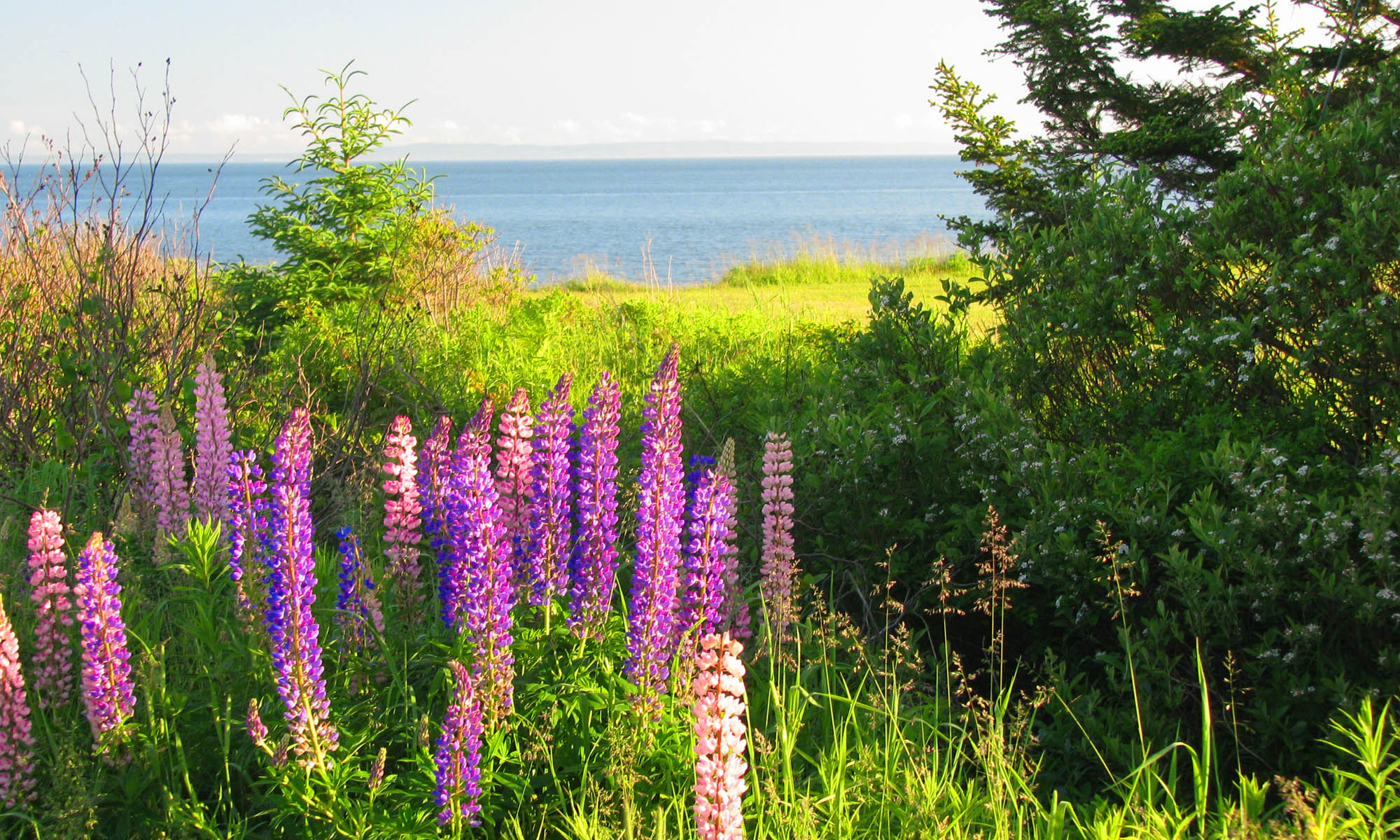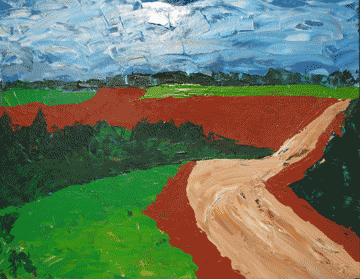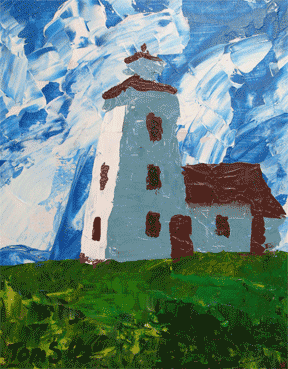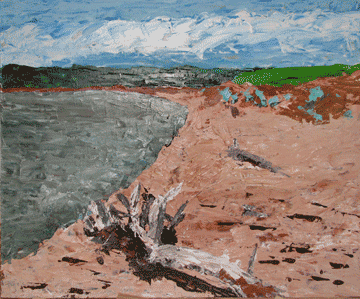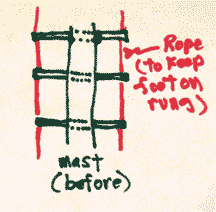
On July 22 I blogged about the problem of some broken-off steps of my mast ladder. Along the theme of my coming book, ‘Never the Same Mistake Twice‘, I decided to fix things to be safer and stronger. I’m not sure if the breaks reflected moisture getting inside the epoxy coating or if it is a fundamental problem of using cherry saplings from my woods (turned in a lathe) as the rungs. After the first rung broke, I was more cautious climbing up but was stopped by the breakage of both sides of a rung half-way up!
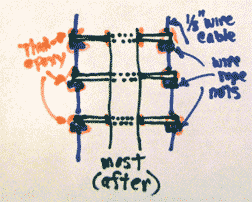
My fix was to replace the outer ropes (which were deteriorating after several years of exposure) with 1/8″ galvanized stranded (aircraft) cable and use epoxy to repair the 3 broken pieces. Under each rung I fastened a wire rope ‘nut’ to provide support for the outer tips of the rungs. Since I couldn’t get these clamps really tight against the bottoms of the rungs, I used thickened epoxy to coat and fill the space…hopefully it will also keep moisture from getting in the wood where the holes drilled down through the rung ends. I had to have the epoxy to fix the broken rungs anyway.
Doing these modifications on the water was both easier and more difficult…easy to reach the (now horizontal) mast from the dinghy and more difficult to stay in place standing up in a small boat. My back was quite tired at the end. But the goal is to have a mast that is fully safe again. Then it will be on to new mistakes to avoid.
